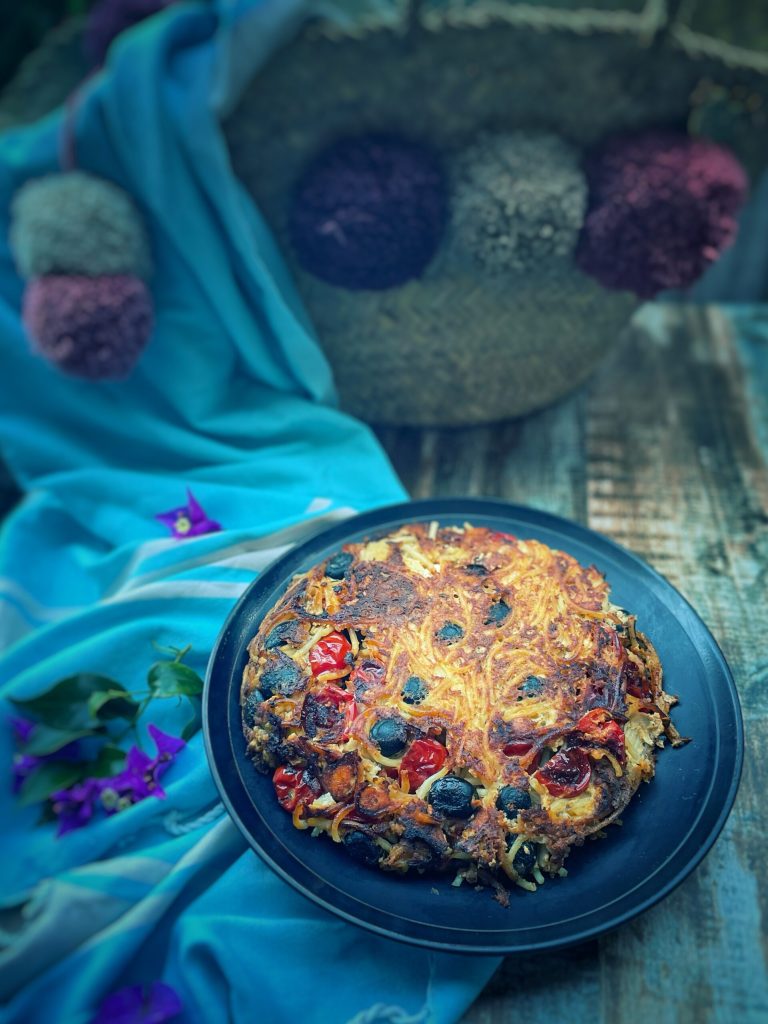The Neapolitan gluten-free pasta frittata is a version for celiacs and those intolerant to gluten of a dish symbolic of home cooking and reuse, created to avoid wasting leftover pasta.
In Neapolitan it is called frittata ‘e maccarune; in the Agro Nocerino Sarnese pizza di maccheroni a pizza ‘e maccarune.
It originated as a poor man’s dish, when families, to avoid wasting leftover pasta (maccheroni meaning any type of pasta), would mix it with eggs and cheese to create a new dish, which could also be eaten cold the next day.
Widespread especially after World War II, in an economically tight context, it became the “sandwich of Neapolitans”: portable, nutritious, and filling, ideal for those working away from home.
It was often wrapped in wax paper and placed in a lunch sack for the beach or factory.
Over time, it was enriched: in addition to eggs and cheese, salami, provola, bacon, or peas were added, making it a mainstay of picnics and beach outings.
My gluten-free version with corn and rice spaghetti is “Mediterranean” with the addition of black olives.

- Difficulty: Easy
- Cost: Economical
- Preparation time: 10 Minutes
- Portions: 4 People
- Cooking methods: Frying
- Cuisine: Italian
- Seasonality: All seasons
Ingredients
- 10.5 oz gluten-free pasta
- 5 eggs
- 3.5 oz provola cheese
- 2 oz grated Parmesan cheese
- 3.5 oz Neapolitan salami (or bacon)
- to taste salt and pepper
- to taste extra virgin olive oil
- to taste pitted black olives
Steps
Cook the spaghetti or another type of pasta (or use already cooked leftover pasta).
In a bowl, whisk the eggs with Parmesan, salt, and pepper.
Add the pasta, provola, diced salami, and olives.
Heat the oil in a pan and pour in the mixture.
Cook over medium-low heat for about 7-8 minutes on each side, turning it with the help of a plate or lid.
Serve hot, warm, or cold.
Variants:
You can replace provola with caciocavallo or scamorza cheese.
Some add milk or cream (1-2 tablespoons) to make it softer.
Traditionally cooked in a well-greased non-stick pan, but you can finish it in the oven if desired.

